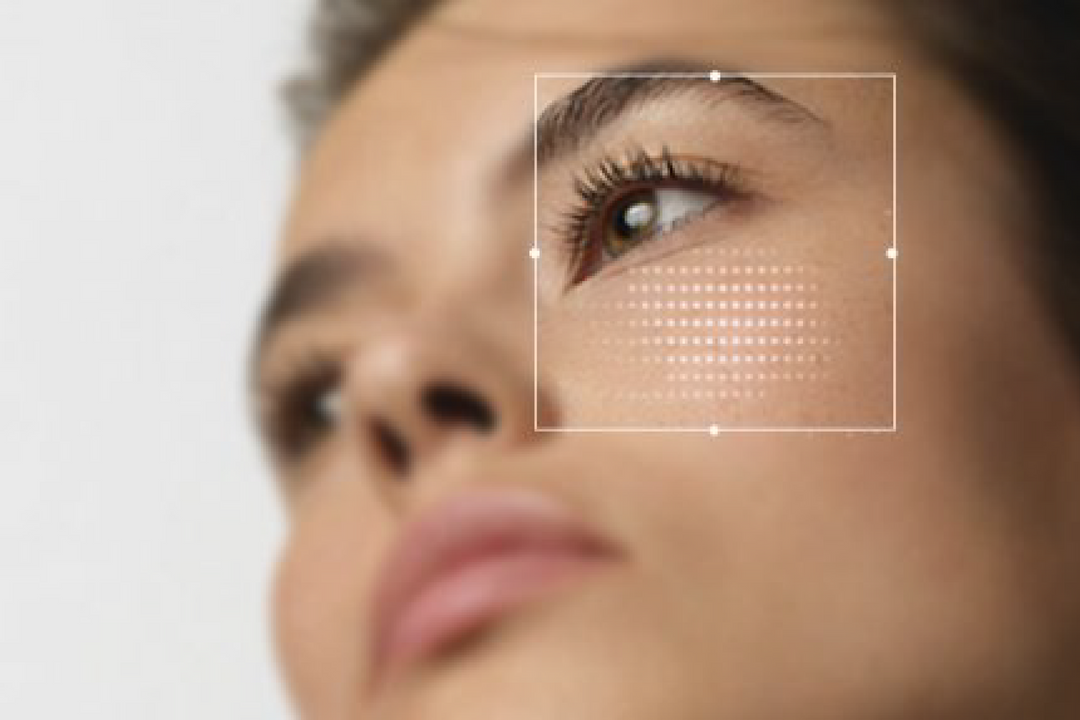How to Choose the Right SPF for Your Skin Type
How to Choose the Right SPF for Your Skin Type
Sun protection is a crucial part of skincare. It shields your skin from harmful UV rays, preventing premature aging and reducing the risk of skin cancer.
But not all sunscreens are created equal.
The Sun Protection Factor, or SPF, plays a significant role in how well a sunscreen protects your skin. But did you know that your skin type can also influence the effectiveness of your SPF?
Choosing the right SPF for your skin type can make a world of difference. It can help you avoid breakouts, dryness, and other skin issues.
In this guide, we'll help you understand SPF, identify your skin type, and choose the best sunscreen for your needs.
Understanding SPF and Sun Protection
Sun protection is a vital part of any skincare routine. One of the main tools in your arsenal is SPF.
SPF stands for Sun Protection Factor. It measures how well a sunscreen can shield your skin from UVB rays.
The SPF number indicates the level of protection. Higher numbers offer more protection against UVB rays.
However, SPF alone does not guarantee complete sun safety. It's crucial to understand the different aspects of sun protection.
Here's what you need to know:
● SPF: Blocks a percentage of UVB rays.
● UVA Protection: Guards against rays causing aging.
● Broad-Spectrum: Protects from both UVA and UVB rays.
● Water Resistance: Stays effective when exposed to water or sweat.
Understanding each component helps you select the right sunscreen for your needs. Never underestimate the power of proper sun protection.
What is SPF?
SPF, or Sun Protection Factor, is crucial in sun safety. It indicates how long the sun's UVB rays would take to redden your skin.
For example, an SPF of 30 means you can stay in the sun 30 times longer than without protection. However, the effectiveness can vary based on skin type and sun intensity.
Choosing the right SPF for your needs is essential. It's wise to opt for a broad-spectrum sunscreen with at least SPF 30.
UVA vs. UVB Rays: What's the Difference?
The sun emits different types of UV rays. Both UVA and UVB rays impact your skin, but in unique ways.
UVA rays penetrate deeply, causing aging and wrinkles. They're present throughout the day and across seasons.
On the other hand, UVB rays affect the outer skin layers. They're responsible for sunburns and vary in intensity with time and location.
It's vital to protect against both to ensure comprehensive sun safety.
The Significance of Broad-Spectrum Protection
Broad-spectrum sunscreens cover a wider range of protection. They shield your skin from both UVA and UVB rays.
This dual protection is essential. It prevents both immediate damage and long-term effects, like wrinkles and skin cancer.
Choosing a broad-spectrum sunscreen ensures comprehensive coverage. It helps keep your skin healthy and safe from sun damage.
Even if it's cloudy or you're indoors, broad-spectrum sunscreen is valuable. It protects against the full spectrum of harmful rays. This type of protection is a cornerstone of effective sun care.
Identifying Your Skin Type

Knowing your skin type is fundamental in choosing suitable skincare products. It helps in tailoring your routine for optimal results.
Different skin types have unique needs. These needs dictate the choice of products, including sunscreen.
Identifying your skin type can be simple. Observe how your skin behaves in different environments and climates. Consider factors like oiliness, dryness, and sensitivity.
A dermatologist can offer a professional assessment. However, many can determine their skin type with careful observation.
Characteristics of Different Skin Types
Oily skin often looks shiny and feels greasy. It's prone to acne and large pores. People with oily skin might experience breakouts frequently.
Dry skin may feel tight or rough. It can be flaky and appear dull without proper moisturization. Dry skin often reacts to changes in weather or harsh products.
Combination skin is a blend of dry and oily areas. Typically, the T-zone (forehead, nose, chin) is oily, while cheeks stay dry.
Sensitive skin can be easily irritated by products or environmental factors. It often reacts with redness or itching. Fragrance-free and gentle products are usually recommended.
Conclusion: Embracing Sun Safety
Sun safety should be part of everyday life. Effective sunscreen use plays a critical role in protecting your skin.
Sunscreen safeguards against harmful UV rays. It prevents sunburns and reduces the risk of skin cancer.
Prioritize finding the right SPF for your skin type. Tailor your choice to meet your unique needs for the best protection.
Maintain awareness about sun exposure regardless of weather. Consistent sunscreen application is key to healthy, glowing skin.
With these practices, sun safety is achievable. You're now equipped to make informed choices and enjoy the benefits of a sun-safe lifestyle.
SPF Recommendations for Each Skin Type
Selecting the correct SPF is crucial for effective sun protection. Each skin type requires a unique sunscreen formula. Consider factors such as oil control, hydration, and soothing properties when choosing a sunscreen.
Let's explore SPF recommendations that cater to different skin types. It's essential to avoid common pitfalls, like choosing a sunscreen that exacerbates skin issues. Here's a quick guide:
● Oily Skin: Opt for oil-free or matte finish sunscreens.
● Dry Skin: Seek moisturizing sunscreens with hydrating ingredients.
● Combination Skin: Choose balanced formulas that control oil and hydrate.
● Sensitive Skin: Look for gentle, fragrance-free options with soothing ingredients.
By understanding your skin's needs, you can make informed choices. This increases your chances of achieving optimal sun protection.
SPF for Oily Skin
Oily skin can be challenging to manage. It's important to choose a sunscreen that won't add extra shine. Look for oil-free and non-comedogenic formulas to avoid clogging pores.
Vichy Capital Soleil Anti-Shine Dry Touch UV Lotion SPF 60 is an excellent choice. It offers a matte finish while providing high UV protection. This ensures your skin stays protected without exacerbating oiliness.
SPF for Dry Skin
Dry skin craves moisture. A hydrating sunscreen can serve dual purposes by protecting and nourishing the skin. Choose formulas enriched with moisturizing ingredients like hyaluronic acid or glycerin.
Derma E Brightening Weightless Moist SPF45 is a wonderful option. It hydrates while shielding your skin from harmful rays. This kind of sunscreen helps in maintaining skin suppleness and prevents drying out.
SPF for Combination Skin
Combination skin requires a balanced approach. It's key to address both the oily and dry areas effectively. A sunscreen that offers hydration without excess oil is ideal.
Bioderma Photoderm Milk SPF 50+ strikes this balance well. It's hydrating yet lightweight enough for oily areas. This ensures a unified approach to sun care, catering to the needs of combination skin.
SPF for Sensitive Skin
Sensitive skin demands gentle care. Opt for sunscreens free from fragrances and harsh chemicals to prevent irritation. Mineral-based sunscreens with zinc oxide or titanium dioxide are often recommended.
La Roche-Posay Anthelios XL Dry Touch SPF 60 Facial Sunscreen is a top pick. Its lightweight and soothing formula suits sensitive skin best. It's designed to minimize potential irritation, providing peace of mind.
Top Sunscreen Picks for Different Skin Types
With so many products available, selecting the right sunscreen can be daunting. Here, we highlight top picks tailored for specific skin types and needs. Each recommendation offers unique benefits, ensuring your skin remains protected and healthy.
Vichy Capital Soleil Anti-Shine Dry Touch UV Lotion SPF 60
Vichy Capital Soleil Anti-Shine is perfect for oily skin. Its dry touch formula leaves a matte finish, reducing shine. The high SPF 60 provides superior broad-spectrum protection against UVA and UVB rays.
La Roche-Posay Anthelios XL Dry Touch SPF 60 Facial Suncreen
La Roche-Posay Anthelios XL is ideal for sensitive skin. It's lightweight, absorbs quickly, and has SPF 60. This facial sunscreen is well-suited for daily use, offering reliable protection without irritation.
Derma E SPF30 Clear Zinc Body Sunscreen
For those who prefer mineral-based sunscreens, Derma E SPF30 is an excellent option. It uses clear zinc to offer effective protection without a white residue. Perfect for natural ingredient enthusiasts.
Attitude SPF30 Sensitive Face Stick - Fragrance-Free
Attitude's SPF30 Face Stick is convenient for on-the-go application. It is fragrance-free, making it gentle for sensitive skin. Easy to apply, this stick ensures your face is always protected.
Additional Recommendations
For skin brightening benefits, consider Derma E Brightening Weightless Moist SPF45. This product combines UV protection with skin-enhancing properties. It helps even out skin tone while keeping it safe from sun damage.
Bioderma Photoderm Milk SPF 50+ is another great pick, especially if you need hydration with high protection. Its creamy texture suits those with normal to dry skin who crave extra moisture.
La Roche-Posay Anthelios Mineral Ultra-Fluid Body Lotion SPF 50 is excellent for anyone seeking a mineral option. Its fluid formula spreads easily, leaving no greasy residue. Ideal for those wary of chemical ingredients.
For environmentally-conscious users, seeking products that are reef-safe is essential. Many brands now offer formulations free from harmful chemicals like oxybenzone, helping protect ocean life. Always check labels to ensure your sunscreen is environmentally friendly and effective.
Application Tips for Maximum Protection

Correct application of sunscreen is key to maximizing sun protection. It ensures that your skin is adequately covered and safe from harmful rays. Follow these guidelines to make the most of your SPF products.
Before application, shake the sunscreen bottle well. This helps distribute the active ingredients evenly. For adequate protection, aim to use approximately one ounce, or a shot glass full, to cover your entire body. For your face alone, a nickel-sized amount is recommended.
When applying sunscreen, pay special attention to often-forgotten areas like the ears, neck, and the tops of your feet. Remember these spots to avoid unexpected burns. After application, allow the sunscreen to absorb fully into the skin before sun exposure.
Here are some quick tips for effective application:
● Apply sunscreen at least 15 minutes before sun exposure.
● Use a broad-spectrum formula with at least SPF 30.
● Don't forget UV-protective sunglasses and a hat.
● Seek shade between 10 AM and 4 PM.
How Much Sunscreen to Apply
Getting the right amount of sunscreen on your skin is crucial. Too little can leave areas of your skin unprotected, making application proportions important. Generally, a generous layer is a good rule of thumb.
A practical measure is using a shot glass amount for full body application. This ensures each area receives adequate protection. Remember, for your face and neck, a nickel-sized dollop is usually sufficient.
Ensure you cover all exposed areas evenly. Refrain from neglecting sensitive regions like the lips or delicate eye area. Consistent and sufficient application aids in maintaining skin health and preventing sun-related damage.
Reapplication and Water Resistance
For long-lasting protection, frequent reapplication is essential. Sunscreens typically remain effective for around two hours. Beyond this, you may be vulnerable to sun damage, necessitating regular top-ups.
Water-resistant sunscreens provide additional security during activities like swimming or sweating. However, they still require reapplication after 40 to 80 minutes of water exposure. Check the product label for specific water resistance duration.
Remember, reapply immediately after swimming or towel drying. This ensures continuous protection, allowing for carefree enjoyment under the sun. Keep your sunscreen handy for easy reapplication, ensuring your skin stays defended all day long.
Common Sunscreen Myths Debunked
Misconceptions about sunscreen abound and can lead to inadequate protection. One common myth is that sunscreen is only necessary on sunny days. However, UV rays can penetrate clouds and cause skin damage. Therefore, sunscreen should be applied daily, regardless of weather.
Another widespread belief is that people with darker skin tones don't need sunscreen. While melanin provides some UV protection, it is not enough to prevent skin damage or skin cancer. All skin types benefit from regular sunscreen use.
Lastly, many think sunscreen in makeup is enough. Yet, the SPF in cosmetics might not be adequate for full protection. It’s best to use a standalone sunscreen underneath makeup to ensure comprehensive coverage. Understanding the truths behind sunscreen use enhances safety in sun exposure.
Additional Considerations for Sun Protection

When thinking about sun protection, it's crucial to remember additional factors beyond just sunscreen. Protecting your skin involves a holistic approach. This means considering other measures along with consistent sunscreen use.
Here are key strategies to augment sun safety:
● Wear a wide-brimmed hat to shield your face and neck.
● Use UV-blocking sunglasses to protect your eyes.
● Opt for clothing with built-in UV protection for extended sun exposure.
Implementing these practices enhances overall protection against harmful UV rays.
Sunscreen for All Seasons and Weather
Many people associate sunscreen only with hot, summer days. However, sun protection is necessary throughout the year. Even during winter, UV rays can impact your skin, especially with reflections off snow.
Cloudy skies also don't imply safety. UV rays penetrate through clouds, leading to unexpected exposure. Thus, a year-round sunscreen routine ensures consistent protection, regardless of the season.
Conclusion: Embracing Sun Safety
Choosing the right SPF for your skin type is more than just a beauty routine. It's a vital step for long-term skin health. By understanding your skin type and selecting appropriate SPF products, you empower your skin against harmful sun damage.
Remember, sun safety is a consistent commitment, not a seasonal affair. Embrace the habit of daily sunscreen use, alongside protective measures like hats and UV-blocking sunglasses. This commitment not only preserves your skin's beauty but also shields against potential health risks. Prioritize sun safety for a radiant, healthy future.






































